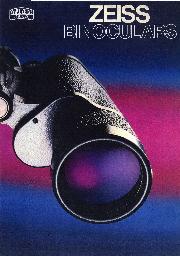 Page 1
Page 1 Eine deutsche Version gibt es hier.
(Catalogue kindly provided by Gary Hawkins)
This catalogue was distributed by binoculars dealers in UK, probably around 1985, because it contains the then newly introduced Porro prism models 12x50 Dodecarem and 8x50 Octarem, later renamed 'Nobilem'. While these represented the rather expensive high end line of the Zeiss Jena collection, the classical line, containing the 8x30 Deltrintem, 7x50 Binoctem and 10x50 Dekarem were Jena's actual working horses of that time. They were of very decent quality and, produced in the DDR, took profit of the favorable currency exchange rate to be available for a highly competitive price. During these golden times, Carl Zeiss Jena was able to produce 200,000 binoculars per year!
What is special about this brochure (and in contrast to the German version) is the fact that it offered two representatives of this classical line, the Deltrintem - Binoctem - Dekarem, as well as the corresponding Jenoptem models. Apparently, these were identical in construction, and any dealer found himself in the delicate situation to explain to the customer the fact that a 7x50 Jenoptem was cheaper than a 7x50 Binoctem, without being able to point out any particular difference in performance. In fact, the catalogue avoids mentioning details regarding this paradoxon, just explaining that "The only difference is in the manufacturing techniques utilized in the two models. This does, of course, mean that the Zeiss 7x50 Jenoptem really does represent outstanding value" (page 6). This sounds like: "Well, we have got twice the same binocular for you. One of them is produced more efficiently than the other and is therefore cheaper. Its your choice...".
In what follows I shall give a few remarks on whatever else I found interesting in this brochure.
Page 3: This introduction appears quite informative and reasonable. Instead of the hype and exaggeration about the unbelievable performance of their products, as often found nowadays in advertising brochures, Zeiss Jena provides a rather sober overview of its production line and the intended spectra of application.
Page 4: The Jenoptem displays the trademark 'aus JENA', printed on the left prism housing. After a legal battle with Zeiss (West, Oberkochen), Zeiss Jena was prohibited to use the Zeiss trademark on products exported to certain Western countries, among them the U.S., but, to my knowledge, not including England. This catalogue uses the Carl Zeiss Jena trademark throughout, but strangely doesn't show it on the instrument itself.
Page 6: The plot shows a cross section of the Jenoptem 7x50 with a simple ocular construction of 3 (?) lens elements (the 'plate' facing the prism seems to indicate the position of a reticle only, as it was provided with some of the binoculars), which seems to be correct for the 7x50, whereas the 10x50 had got more sophisticated wide-angle oculars.
Page 14: The Dodecarem is touted as 'New', which indicates that this brochure was printed around 1985. It shows the same, rather simple ocular construction of the 7x50 Jenoptem, which is incorrect, since the Dodecarem, like the Octarem, came with 4 lens elements (see also here for a detailed plot of the Octarem published 1985 in the Jenaer Rundschau).
Page 16: They confuse '8x50 Dodecarem', which supports the claim that these binoculars were probably newly introduced.
Page 18: This is of course the civilian version of the EDF 7x40 of the NVA. It is interesting to note that the catalogue does not mention its military origin. The ocular construction looks identical to the Notarem's (Page 10), but this seems to be incorrect, as this more detailed plot suggests a 5 element Erfle construction instead. The remark "Built-in Umbral filters act as protection against strong sunlight" refers to the strong yellow tint of the EDF. In reality this was not produced by any filter, but the result of special radiation resistant flint-glass types in the oculars; see here (in German language) for a more detailed discussion on that.
Page 20: The Octarem is specified with a field of view of 122m/1000m. However, on Page 17, the same specification is given as 130m/1000m. This confusion has never been sorted out since then. Even nowadays both specifications are found for the Octarem or its successor, the Nobilem. The 8x50 Nobilem which I have tested has definitely got 130m/1000m.
Remark: After the collapse of the DDR, the Zeiss Jena plant was taken over by Docter Optic. A set of their product leaflets of the early 1990s shows that most of the Zeiss Jena binoculars were still made under the Docter label, some improved versions of them are produced even today.
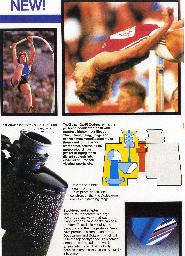
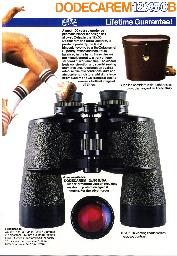
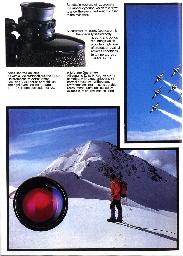
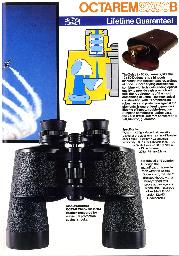 Page 14,15,16,17
Page 14,15,16,17
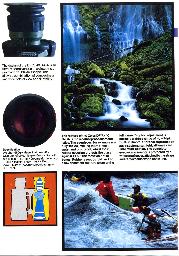
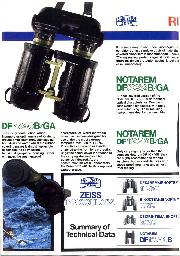
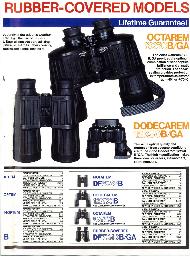
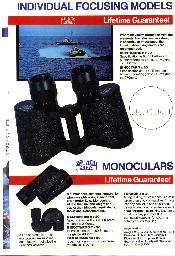 Page 18,19,20,21
Page 18,19,20,21